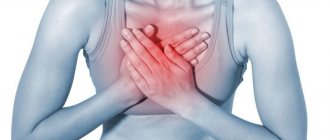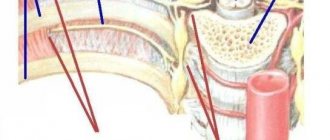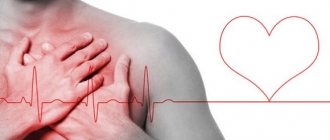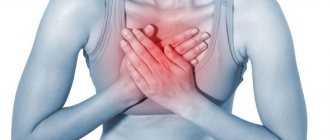A burning sensation in the chest is a clinical manifestation of a number of pathological conditions. The rib cage (or, as it is also called, the chest) is a part of the body that contains the entire chest cavity and the upper component of the peritoneum. They are a “receptacle” for vital human organs. Discomfort in them often signals the presence of pathologies of the heart, liver, gastrointestinal tract or lungs.
You can get rid of this symptom forever only by identifying its initiating factor. To do this, you need to seek professional advice. The specialist with whom you make an appointment will conduct an examination and prescribe appropriate diagnostic tests, thanks to which it will be possible to accurately diagnose, determine a treatment strategy and begin to implement it.
Where to go if you have a burning sensation in your chest?
Are you a resident or guest of the capital and are you faced with a similar problem? Contact CELT. Our clinic is multidisciplinary and has departments of various specializations. You can make an appointment with a cardiologist, therapist, neurologist or gastroenterologist and get the help you need.
Our diagnostic department offers ample opportunities for correct diagnosis and identification of pathological conditions in the initial stages of development. Our staff is staffed with highly qualified specialists: doctors of the highest category, candidates and doctors of science with decades of medical practice behind them.
You can find out our prices by going to the “Services and Prices” tab in this section. To avoid misunderstandings, we recommend that you check the numbers with our operators by calling the number.
Spinal diseases
Very often, a burning sensation in the area of the heart indicates disorders in the spine, because the condition of the skeletal system has a significant impact on various organs. Such sensations occur after lifting heavy objects, bending over, or making sharp turns. A burning sensation is most often observed with osteochondrosis, displacement of intervertebral discs.
All symptoms are similar to those of angina pectoris, except for the lack of a cause-and-effect relationship with physical activity. To reduce pain, you don’t need to do anything, just change your body position. If you have such symptoms, you should consult a therapist or neurologist and begin the prescribed treatment.
Physiological causes of burning in the chest
Experts identify a number of initiating factors for such a phenomenon as a burning sensation in the chest. The most common of these is poor diet, including fatty, spicy, salty foods, carbonated water and fast food, along with frequent overeating or eating food before bed.
The above leads to the contents of the stomach entering the esophagus, where it irritates the mucous membrane, which causes discomfort. They are accompanied by nausea, heartburn and belching, as well as bloating. In order to exclude this, it is enough to change your diet by minimizing the above-mentioned foods, optimizing portion sizes and eliminating the consumption of food before bedtime.
The same can be said about excessive consumption of coffee and alcoholic beverages, as well as smoking. All of them can cause a burning sensation in the chest, which will stop as soon as their consumption is reduced to a reasonable limit. It is important to understand that it is not the norm and its appearance is a reason to visit a doctor.
A number of reasons are associated with diseases of the cardiovascular system, characterized by the inability of blood vessels to provide the heart with a sufficient volume of oxygen. This occurs with ischemia, which is manifested by a local decrease in blood supply due to narrowing or blockage of the arteries, due to which the most important organ of the human body suffers.
Do not forget about neurological factors, when a burning sensation occurs due to compression or damage to the nerve ending or in stressful situations, with neuropsychiatric disorders. In addition, it can be caused by pathological conditions characterized by damage to the bronchial mucosa or trachea.
conclusions
There are many reasons why the heart burns. Most of them are associated with chronic pathologies that require complex and long-term treatment.
However, other sources of intense pain include pathologies that directly threaten human life. Therefore, at the first symptoms, which are accompanied by disorders of the nervous system (arms or legs begin to go numb), expressed by respiratory failure (shortness of breath, debilitating cough), consult a doctor for qualified help.
Diseases that cause burning in the chest
Only a doctor who has everything necessary for diagnosis can identify the cause of a burning sensation in the chest in the middle, right or left. You should not engage in self-diagnosis, as it is fraught with the risk of complications.
| Diseases | Triggering factors |
| Hearts | Sharp pain and burning in the chest near the heart may be a sign of a serious condition that requires immediate medical attention. This occurs with the following diseases:
|
| Liver | Experts identify a number of diseases of the liver and biliary tract, the symptoms of which are manifested by a burning sensation in the sternum. These include:
Other clinical manifestations of the above diseases are as follows:
|
| Gastrointestinal tract | A phenomenon such as heartburn always leads to a burning sensation and pain symptoms due to irritation of the walls of the esophagus by gastric juice. As for diseases, one of the symptoms of which is a burning sensation in the chest, they are as follows:
|
| Intercostal neuralgia | It is a pain syndrome that develops as a result of damage to the intercostal nerves due to various reasons, ranging from compression to infection or intoxication. This syndrome is a sign that the patient has diseases of the organs of the chest wall, mediastinum, and spinal cord. Clinical manifestations are as follows:
|
| Pneumonia | Acute inflammatory infectious lesion of the lungs, which can be lobar or focal. Symptoms of the first include a cough, a sharp increase in temperature, burning and pain in the sternum, and weakness. As for the second, its onset is hardly noticeable; it appears after acute respiratory diseases. Clinical manifestations in addition to pain on inspiration, shortness of breath, cyanosis, wet cough. |
| Scoliosis | Persistent sideways curvature of the spinal column relative to its axis. A burning sensation in the chest occurs due to the fact that with this disease, abrasion of the intervertebral discs and compression of the nerve endings occurs, which provokes serious discomfort. |
| Intercostal myositis | Inflammatory processes of skeletal muscles located between the ribs. On palpation, pain symptoms appear along the entire intercostal space. Experts identify three pain points: the spinal column, the sternum and its lateral surface. In addition, there is swelling of the affected part, redness or, conversely, paleness of the skin, sore throat, cough and headache. |
How to distinguish heart pain from another
{banner_banstat10}
There are several effective criteria for distinguishing between types of pain.
- Cardiac discomfort does not depend on body position. He is stable.
- There is no connection with the depth of inspiration or time of day.
- Also, when palpating the sternum, the strength of the unpleasant sensation does not change in any way.
- The use of Nitroglycerin, on the contrary, reduces the intensity of discomfort. And this speaks in favor of the cardiac origin of pain. But analgesics and anti-inflammatory drugs have no effect.
These are reliable criteria, but they should not be taken as absolute truth. Situations are not alike; exceptions are always possible.
Advanced diagnostics under the supervision of a group of doctors puts an end to the issue. It is recommended to start under the supervision of a cardiologist.
Which doctor should I contact if I have a burning sensation in my chest?
Regular repetitions of this symptom are a reason to contact a therapist. He will conduct an examination, collect anamnesis, ask questions that interest him - and either prescribe treatment or refer him to:
- gastroenterologist - if gastrointestinal diseases are suspected;
- orthopedist - if osteochondrosis is suspected;
- neurologist - if osteochondrosis is suspected;
- cardiologist - if you suspect diseases of the cardiovascular system.
They, in turn, will prescribe diagnostic tests to make an accurate diagnosis.
Causes of GERD
Reflux (reflux of stomach contents into the esophagus) can occur for the following reasons:
decreased tone of the lower esophageal sphincter.
Sphincter weakness may result from:- consumption of caffeinated drinks, chocolate;
- smoking;
- alcohol abuse;
- hormonal changes during pregnancy;
taking certain medications;
- flatulence (which, in turn, can be a consequence of poor nutrition, gastrointestinal diseases, digestive disorders - dyspepsia);
pregnancy;
- hiatal hernia.
For the development of gastroesophageal reflux disease, not only the reflux itself is important, but also some other factors that contribute to the aggravation of the situation, for example:
- depressed state of the esophageal mucosa, in which it is unable to resist damage;
- impaired ability of the esophagus to cleanse itself. Normally, the esophagus should quickly be cleared of the stomach contents that have entered it - due to gravity and peristalsis, and the acidity of the environment should be eliminated by sodium bicarbonate, which is part of the saliva.
Factors that provoke reflux are:
- stress;
- eating too much food (overeating);
- eating foods that cause increased gas formation and other digestive disorders;
- physical activity after meals.
How is the diagnosis done?
In order to diagnose a symptom, the doctor only needs to conduct a survey and hear the patient’s complaints. The disease causing it can be diagnosed by conducting comprehensive studies. First of all, the patient is examined and a medical history is collected, after which laboratory tests of blood and urine, a detailed blood test, and determination of hormonal levels are prescribed. In addition, hardware tests are prescribed, the selection of which is based on preliminary studies. It could be:
- X-ray of the sternum;
- Ultrasound scanning of the internal organs of the chest cavity;
- Electrocardiography;
- Gastroenterological studies.
Trial of proton pump inhibitor therapy
A test involving short-term therapy with high doses of a proton pump inhibitor for non-cardiac pain has both diagnostic and therapeutic value.
Patients are prescribed 60-80 mg/24 hours of omeprazole, esomeprazole or pantoprazole and 30-90/24 hours. lansoprazole. Duration of trial therapy is up to 28 days. The sensitivity of this test is estimated at 69–95% and specificity at 67–86%.
Patients who do not respond to treatment attempts with proton pump inhibitors should undergo the following procedures:
- daily impedance-pH-metry of the esophagus, which makes it possible to diagnose non-acid reflux, the symptoms of which persist after such treatment;
- esophageal manometry, diagnosing esophageal motility disorders;
- in cases of chest pain not associated with GERD or esophageal motility disorders, after excluding other causes, a consultation with a psychiatrist is prescribed.
Treatment depends on the type and severity of the condition causing chest pain.
Preventive actions
In order to prevent the development of this unpleasant symptom, you need to take a number of measures:
- Treat inflammatory processes in a timely and correct manner;
- Eat right, minimize the consumption of salty, spicy, excessively fatty foods;
- To live an active lifestyle;
- Avoid stressful situations;
- Follow a daily routine, set aside enough time for sleep;
- Regularly undergo preventive examinations.
Don't forget: a burning sensation in the sternum can be a sign of serious illness. Its occurrence is a reason to seek professional medical help!
Make an appointment through the application or by calling +7 +7 We work every day:
- Monday—Friday: 8.00—20.00
- Saturday: 8.00–18.00
- Sunday is a day off
The nearest metro and MCC stations to the clinic:
- Highway of Enthusiasts or Perovo
- Partisan
- Enthusiast Highway
Driving directions
Jar of Hearts
Problems at work and troubles in your personal life lead to constant stress. All this causes unpleasant sensations, namely a burning sensation in the area of the heart, which seems to be a pinched nerve. As a rule, in a calm situation this feeling should disappear because the reasons lie in excessive emotional stress, otherwise you should consult a neurologist.
Methods for treating pneumonia
If pneumonia is bacterial in nature, antibiotics are prescribed. Their effectiveness can be assessed after 48-72 hours. If the temperature subsides, the cough becomes less frequent, and the patient begins to feel better, the treatment continues. You cannot interrupt the course of medications, and it is important to take them correctly as prescribed by your doctor. If antibiotics do not help, another treatment is prescribed or changed to a drug from another group.
For viral pneumonia, antibiotics are not effective, so antiviral drugs are prescribed. Vitamins and immunomodulators can be prescribed as auxiliary substances.
Once the patient's body temperature has returned to normal, physical therapy can be prescribed. It allows you to remove phlegm from the lungs. For this purpose, herbal medicines are often taken, for example, licorice root or complex breast mixtures.
Along with drug treatment, patients need bed rest, meals containing protein and vitamins, and plenty of warm drinks. For the best effect, therapeutic methods are recommended - electrophoresis, inhalation, massage, magnetic therapy, etc.
Pneumonia and bronchitis: what is the difference?
Both diseases affect the human respiratory system, which means they have similar symptoms. It is often difficult to distinguish the two pathologies from each other.
| Pneumonia | Bronchitis |
| In most cases, it is accompanied by a sharp increase in temperature to 38-39° and a feverish state. There is a slight increase in temperature. | Accompanied by a strong dry cough. In some cases, sputum may appear greenish or streaked with blood. Wet cough, sputum is light in color. |
| When listening to the chest, “wet” rales are heard. | When listening to the chest, “dry” wheezing is heard. |









